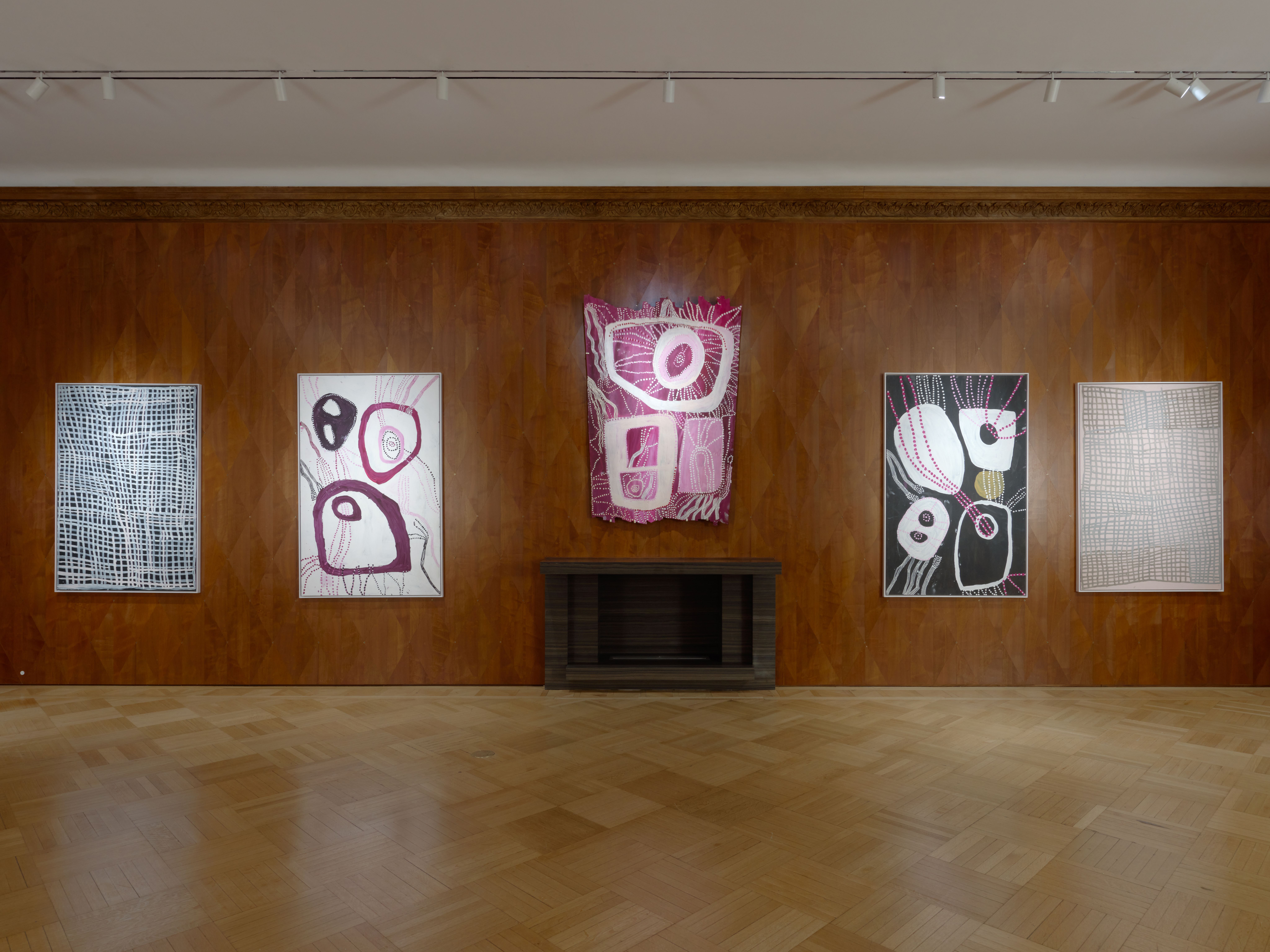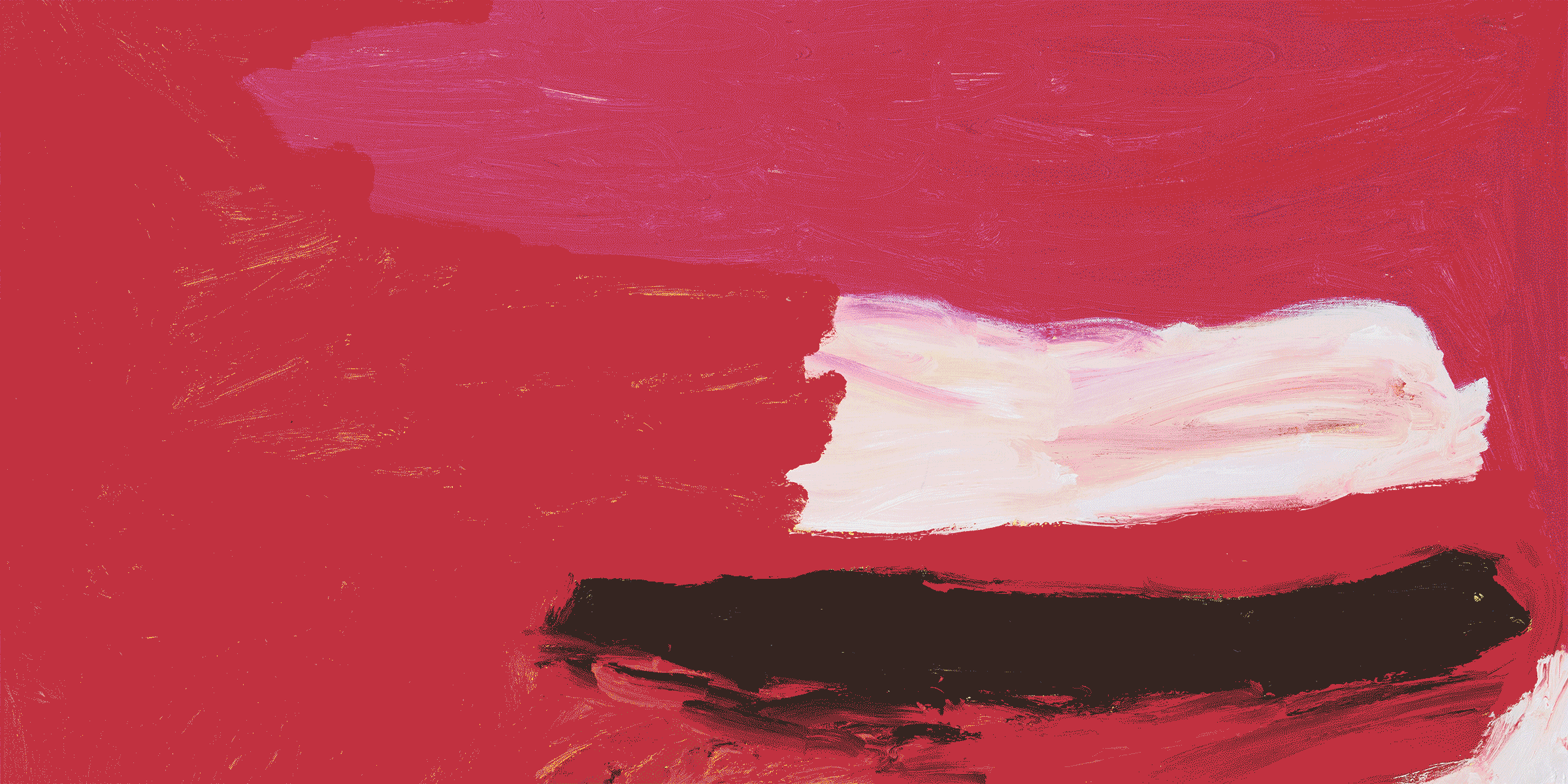
Noŋgirrŋa Marawili
C. 1939–2023, Darrpirra, North of Djarrakpi (Cape Shield), Northern Territory; Lived and worked Yirrkala and Wandawuy, East Arnhem Land, Northern Territory
"Water, rock, and the waves which run and crash upon the rocks, the sea spray...This is what I do."
Artwork
Exhibitions

Desert + Coast: Seven Elder Aboriginal Painters
Biography
Noŋgirrŋa Marawili was a highly respected senior Yolngu artist and elder whose significant body of work draws on Yolŋu culture, while also being deeply personal, incorporating aspects of her own history and experience, and embracing experimentation. Her contemporary art practice encompasses bark paintings, prints, and larrakitj (ceremonial hollow logs), which engages two distinct but deeply intertwined approaches underpinned by the Madarrpa philosophy: “if you paint the land, you should use the land.”
She was well known for her stark black-and-white works that feature miny’tji (sacred clan designs), the crosshatching Marawili was trained in, widely used across Arnhem Land to encode sacred identity. She also often innovates upon this approach to express the uniqueness of her Country, focusing on the interaction between the forces that shape the land, sea, and sky. Marawili explained: “I paint water designs. The water. As it crashes onto the rocks at high tide. Sending the spray into the sky…Rocks that stand strong. And the waves that run and crash upon the rocks.”
In 2018, Marawili began mixing gapan (sacred white ocher) with magenta ink sourced from print toner cartridges found and salvaged on her Country. This innovation marked a significant shift in her practice, but also for Yolŋu creative and cultural practice more broadly. The bright magenta and soft-pink monochromes that manifest through her intermingling of natural and manmade pigments capture the dynamism of the landscape she calls home: cyclonic weather, waves crashing against boulders, sea mist in the air. In doing so, Marawili highlights the interrelationship between land, sea, and sky. Her innovative approach to painting harnesses both tangible and intangible elements of Country to convey the landscape as alive and living, and emphasizes the interrelationship between people and place.
Marawili’s work has been exhibited nationally since 1994. Along with several solo exhibitions—notably, Noŋgirrŋa Marawili : From my Heart and Mind (2018), Art Gallery of New South Wales, Gadigal (Sydney)—her work has featured extensively in a range of group exhibitions, including Bark Ladies (2022), National Gallery of Victoria International, Naarm (Melbourne); Know My Name: Australian Women Artists 1900 to Now (2020–21); Defying Empire: 3rd National Indigenous Art Triennial (2017), National Gallery of Australia, Kamberri (Canberra); and NIRIN: 22nd Biennale of Sydney (2020).
In 2015 and 2019, Marawili was awarded the coveted Bark Painting Award in both the National Aboriginal and Torres Strait Islander Art Awards, Museum and Art Gallery of the Northern Territory, Darwin. Also in 2019, she won the Roberts Family Aboriginal and Torres Strait Islander Prize as part of the Wynne Prize at the Art Gallery of New South Wales, Gadigal.
Her work is in public and private collections nationally and internationally, including the Tate Modern, London, United Kingdom; Kluge-Rhue, University of Virginia, USA; and Voitron Collection, Brussels, Germany.
While Noŋgirrŋa Marawili's family has authorized the use of her name in written form, they request that it not be spoken aloud in the presence of people from Arnhem Land or in the Miwatj region. Her spirit has a long journey to go on to return to her origin point. Calling her name aloud could distract and delay her spirit’s return in a new form.